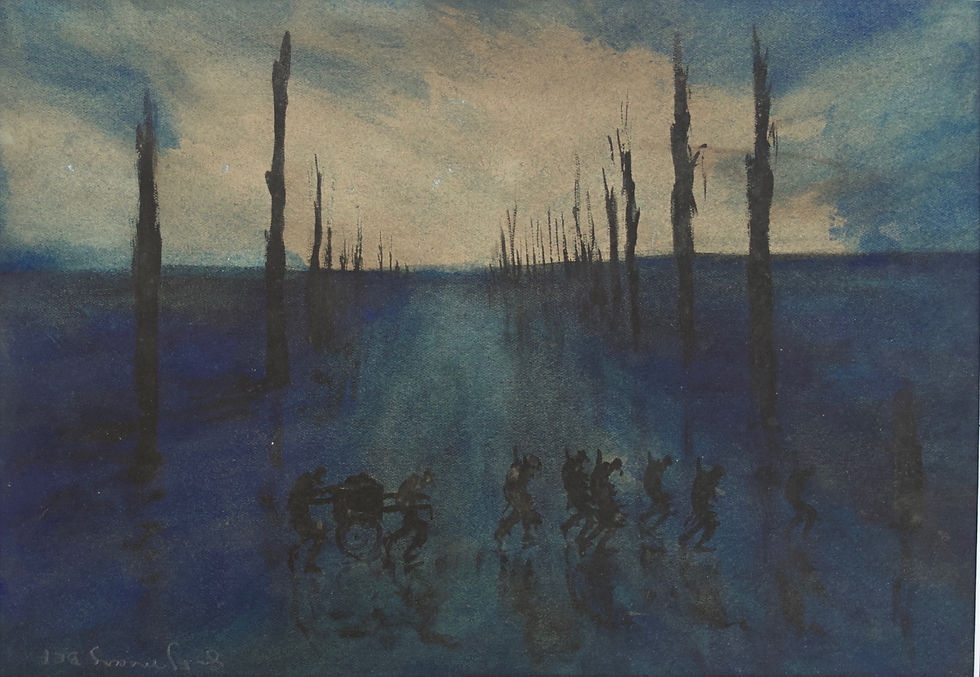

Gunner F. J. Mears (c.1890-1930)
Night manoeuvres,
Signed (upside down*), "Gnr FJ Mears BEF",
Watercolour with silver paint,
7¼ x 10¼ inches
*A consistent feature of Mear's work is his upside-down signature; his response to a world that he believed had been turned on its head.
Sold
Click on image to view larger versions
The bleak view of Poplar trees stripped back to flayed columns by artillery bombardment, recalls Paul Nash's scene of utter desolation depicted in We are Making a New World. Such images provide a poignant and horrifying contrast to the idyllic views of Poplar lined avenues and canals, so beloved by the Impressionists only a few decades earlier.
The scant detail relating to Gunner F. J. Mear's life is made self-evident from the outset by the reduction of his forenames to initials, even after all this time. It has been established that he fought in WWI as a gunner in the Royal Garrison Artillery (RGA) as part of the British Expeditionary Force (BEF) and that he was discharged due to injury or ill health in 1917.
His re-emergence as an artist can be traced to a review in the Nottingham Journal of 1920 of an exhibition at the George C. Clackner Gallery, 20 Old Bond Street, London with the strap line, "SOLDIER’S PICTURES BOUGHT BY DUKES AND DUCHESSES". Among the collectors of his work at the time were Lady Astor and the Duchess of Norfolk; the success of such exhibitions saved him from destitution.
Examples of his work are held by the Imperial War Museum. An exhibition at the The Kelvingrove Art Gallery and Museum, Glasgow entitled, Brushes with War, features several works by Mears.